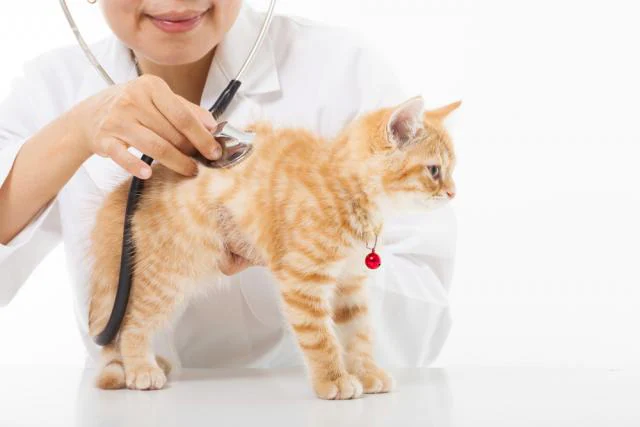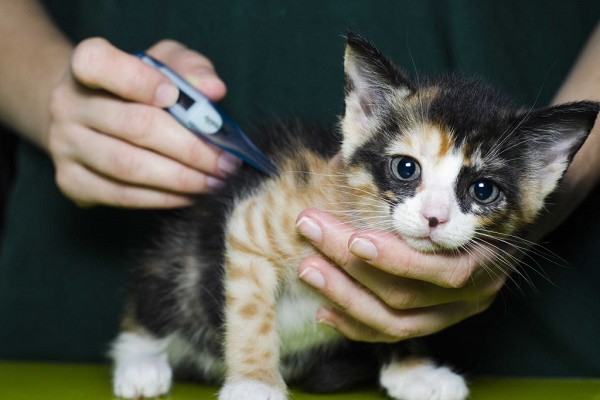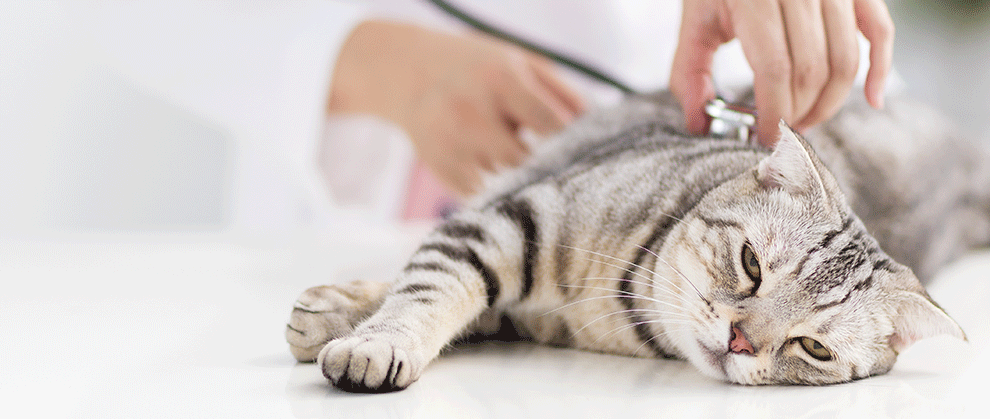Fever in Cats- Cats have a typical temperature of 100.4o to 102.5o Fahrenheit. When temperatures rise above 102.5o F, cats get a fever. Although fevers can help you fight disease, they can also harm your organs if they get too high. When a cat’s body temperature exceeds 103 degrees Fahrenheit, it is said to have a fever.
If the animal’s body temperature hits 106 degrees Fahrenheit or above, it has a severe fever that requires emergency medical attention. Cats are at risk of brain and heart damage, as well as mortality, as a result of these higher temperatures.

Table of Contents
Causes of Fever in Cats
Fever in Cats – Hyperthermia is a condition in which the body temperature rises above normal. Being in a highly warm environment or having greater muscle activity, for example, might cause abnormal or uncontrolled Fever in cats. A fever, on the other hand, is a controlled form of hyperthermia. It occurs when the set point in the hypothalamus, the region of the brain that controls the body’s temperature, is raised. Fever in cats is frequently caused by circumstances that activate the immune system, such as:
- Environmental causes
- Poisoning or chemicals
- Immune-mediated inflammatory illness
- Metabolic diseases
- Autoimmune disease
- Endocrine disorders
- Bacterial infections
- Viral infections
- Fungal infections
- Various parasites
- Tumors or malignancies
- Some drugs
- Internal injuries
Symptoms of Fever in Cats

Fever in cats -causing diseases in cats can also result in some suggestive characteristics. Cats can conserve the energy needed to develop a fever because of these habits, which originated in wild animals to help them survive the illness. Fevers work to prevent disease by stimulating the immune system and slowing the spread of bacteria and viruses. Depending on the underlying cause of the fever, the cat may show a number of additional symptoms.
- Lack of appetite
- Weight loss
- Weakness
- Lethargy
- Rapid pulse
- Panting or rapid breathing
- High body temperature
- Dry skin or mouth
- Dehydration
- Flushing or reddening of the skin
- Behavior changes
- Confusion
- Shock
- Seizure
- Even Death
Diagnosis of Fever in Cats
The most accurate way to take a cat’s temperature is with a pediatric rectal thermometer. A glass thermometer is more dangerous than a digital thermometer. If you drop it, it won’t shatter, and it will alert you when it’s time to check the reading. This is usually done rectally with the aid of a thermometer.
The temperature of the animal will establish whether it has a fever. If a fever is present, more tests will be performed to discover the cause. A fever is commonly associated with an ailment, disease, or condition. Prepare to talk about your pet’s medical history as well as any symptoms you’ve noticed.
The veterinarian will perform a comprehensive medical examination and may obtain blood and urine samples for testing. To identify why the cat’s body temperature is raised, a comprehensive blood panel and tests for several viral or inflammatory illnesses may be required. X-rays or other diagnostic tools may be used by veterinarians to look for evidence of infections, injuries, or malignancies. If the reason for the fever cannot be discovered following thorough diagnostic efforts, the patient will be diagnosed with a fever of undetermined source.

Treatment of Fever in Cats
Fever in Cats – When treating a fever, the primary focus will be on maintaining hydration and lowering the temperature, with additional treatments varying depending on the underlying condition. It’ll be crucial to keep your cat hydrated as they fight the fever. Make sure your cat has fresh, clean water that is conveniently accessible from wherever they want to relax.
Antibiotics may be required if the source is a bacterial infection, for example. Intravenous or subcutaneous fluids are administered to treat moderate or severe dehydration. The following are some frequent treatments:
- Antibiotics: Because infections are a prominent cause of fevers, antibiotics are commonly used to treat them.
- Fever-Reducing Drugs: Some pain-relieving and anti-inflammatory medications, such as nonsteroidal anti-inflammatories (NSAIDs) that are safe for cats, are beneficial in reducing fevers, but seek medical counsel first.
- Fluids, intravenous (IV), or subcutaneous (SQ): If the cat is dehydrated, fluid therapy is required.
- Corticosteroids: These medications are used to combat inflammation, which is a common cause of fever.
- Surgery: Surgery may be required to remove the source in situations of serious illness, tumors, or certain parasites.
While your pet has a fever, they will need to maintain an acceptable caloric intake, therefore some dietary adjustments, such as nutritious meals or possibly high-calorie beverages, may be required to aid in their recovery. Never administer medication to your cat without first consulting your veterinarian. Cats are poisonous to several fever treatments, such as acetaminophen.
RECOMMENDED ARTICLES
- Oriental Longhair Cat – 6 Dynamic Body Characteristics, Behaviour, And Caring
- Vomiting In Cats- Causes, Diagnosis, And Treatment
- Persian Cat Breed- Characteristics, Behaviour, And Health
- Oriental Bicolor Cat – 5 Dynamic Body Characteristics, Behaviour, Caring and Health
- Miscarriage in Cats – Symptoms, Causes, Diagnosis
- Oriental Shorthair Cat- Characteristics, Behaviour And Health
If you like, Please share it. Sharing is usually caring.




